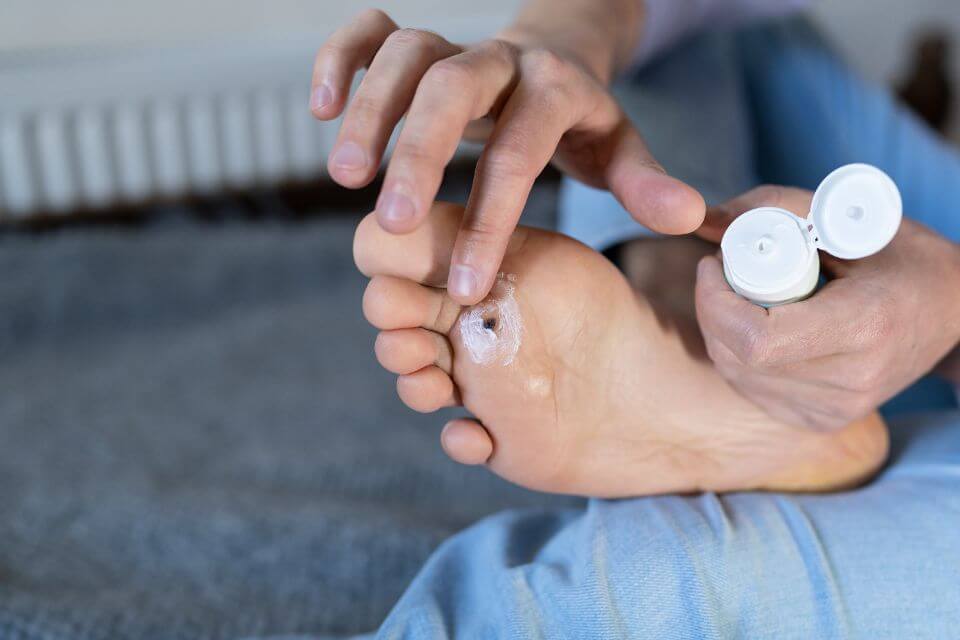Warts, especially on our feet, can be incredibly frustrating to deal with. These are usually raised bumps, but may have other characteristics depending on the type.
If left alone, they may develop into a more serious concern, potentially causing discomfort and pain. But which warts are the most difficult to manage, and how may you treat them?
In this article, we’ll do a deep dive into different types of warts and which may be the hardest to get rid of. We’ll also explore the different treatments available and how a podiatrist may be able to help.
Are you tired of managing warts on your own? Reach out to our team at Capital Podiatry in Tuggeranong today. With years of experience, we understand the methods to address your concerns with care.


Types of Warts
There are many different types of warts that may grow almost anywhere on the body. They are also contagious and can spread quickly. However, some of the most difficult to treat are plantar warts.
These are warts that develop on your feet. They are considered some of the hardest to remove because the weight of your body may push them deeper into your skin. Here, we’ll go over the different types of plantar warts.
Plantar Warts
While most warts grow outwards, plantar warts grow inwards. They develop along the soles of your feet and are often visible as small holes. Likewise, your skin may also roughen around the area.
Plantar warts come in two types, myrmecial-type and mosaic-type. Myrmecial warts develop from HPV type one, while mosaic warts develop from HPV type two.
Here, we’ll outline their unique characteristics so you may be able to identify them.
1. Myrmecial-type Plantar Warts
Myrmecial-type plantar warts are usually very deep and tender. Walking on them or applying pressure may cause pain, similar to stepping on rocks.
Often, these warts may appear as patches, with yellowish, hardened skin around them. Black or brown dots, which are burst blood vessels, may also be visible in the centres.
2. Mosaic-type Plantar Warts
Mosaic-type plantar warts are fairly similar to myrmecial warts, with a few key differences. These are clusters that are usually packed more tightly together.
Mosaic warts may also appear to be flatter than myrmecial warts and often cause slightly less pain.
Periungual Warts
Finally, along with plantar warts, periungual warts may be just as stubborn. These warts develop underneath your nails or toenails, causing pain and poor nail growth.
While they may start small, these warts can also grow and spread to cover more areas. They may appear as roughened, whitish skin that has an almost cauliflower-like appearance. As they grow, they may be painful and cause the skin to split.
Addressing Plantar Warts at Home
There are a few at-home remedies people use to try to manage their warts. These usually include over-the-counter medication and duct tape.
Usually, salicylic acid or freezing patches are the preferred choice. However, it’s important to follow the packet instructions carefully. If you notice any adverse effects, you should stop applying them immediately.
Duct tape may also be a useful intervention. Placing a small bit of tape over the wart may help prevent it from spreading or worsening. Leave the tape in place for a few days before removing it, soaking your feet, and rubbing away the dead skin.
This may need to be done many times before the wart is completely gone.
How a Podiatrist May Help
Treating your warts at home may not be very reliable. Without careful, consistent application, your warts may continue to spread, causing more discomfort.
A professional may accurately assess what type of wart you have and the best treatments available. Common podiatry treatments for warts include:
1. Microwave Therapy
Microwave therapy is a cutting-edge wart treatment. It does not require an anesthetic or dressings after the procedure. With a SWIFT machine, microwaves are directed at a wart through a handpiece.
The microwaves penetrate the skin and heat the wart, causing it to react. This helps your body identify it and fight it off in an immune response. While it may cause some discomfort, most people only need a few sessions to complete the treatment.
2. Freezing
Freezing is a common wart treatment. An experienced podiatrist may apply liquid nitrogen directly to the wart. This aims to cause blisters to form under the wart, which may help lift it away.
More than one session is usually required to complete treatment, and application may cause a small amount of discomfort.
3. Surgery
Surgery is usually a last resort. If other treatments have not worked, your healthcare professional may cut out your wart. Burning may also be used to try to prevent recurrence and kill the virus. These procedures may be painful and require anaesthesia.
Find Real Support With Capital Podiatry
Are you tired of unsightly and painful warts holding you back? At Capital Podiatry, our team has years of combined experience addressing a wide range of foot concerns. With personalised support and the latest SWIFT technology, you may finally get rid of these stubborn growths.
If you’re ready for gentle, targeted support, reach out to our team today. We are always happy to answer your questions and aim to provide the care you deserve.
